Looking to get more clicks and replies from your emails? Then it’s time to go beyond plain text and static images. Today, email marketing is changing fast. Businesses are using email marketing services and SMTP server services to send Interactive Email Content, like buttons, sliders, polls, and videos – inside emails to grab attention and boost conversions. Why? Because interactive content in emails is more engaging. They let readers take action directly from the email, without leaving their inbox.
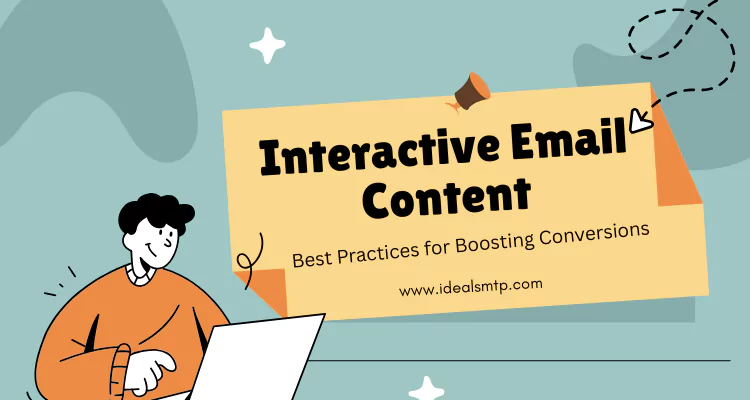
Think of it like this: instead of just reading your email, people can interact with it. They can book a demo, answer a quiz, or shop from a product carousel- all without opening a new page. This makes the experience smoother and more fun, which helps improve click-through rates and sales.
In this blog, we’ll explore the best practices for using interactive content in email marketing campaigns. From choosing the right tools, Bulk email marketing services, and SMTP server services to designing mobile-friendly content, we’ll cover everything you need to know. Whether you’re a beginner or an expert, these tips can help you stand out in crowded inboxes and turn your emails into conversion machines. Let’s dive in and make your emails more powerful than ever!
Table of Contents
What is Interactive Email Content?
Interactive email content is a type of email that allows readers to take action or engage directly within the email. Instead of just reading or clicking a link, users can interact with different elements like buttons, sliders, polls, quizzes, image carousels, or even play videos, without leaving their inbox.
This kind of content makes emails more exciting and engaging. For example, if you’re sending a product showcase through bulk email marketing services, users can swipe through items in a carousel. Or, if you’re running a survey, users can answer it directly in the email. It saves time and keeps the reader focused on your message.
Interactive emails are great for grabbing attention, increasing clicks, and improving conversion rates. Partnering with a reliable SMTP server provider ensures your interactive campaigns are delivered successfully and reach the inbox.
Interactive Content in Email Marketing uses HTML and CSS coding to work properly, and they need to be tested across email platforms to make sure they display well everywhere. While not all email clients support every type of interactive feature, most modern platforms do.
Read More- Transactional Email vs. Marketing Email.
Why send interactive emails?
Interactive emails are becoming very popular, and for good reason! Here’s why you should start using them in your email marketing:
- More Engagement- Interactive Email Content grabs attention quickly. When users can click, swipe, or answer something in the email, they stay interested longer.
- Higher Conversions- Interactive Email Content help users take action directly, like booking a call, filling a form, or buying a product, without leaving the inbox. This boosts conversion rates.
- Better User Experience- interactive mailing content makes emails fun and easy to use. It feels like a small website built directly into the email.
- Stand Out from Competitors- Most businesses still use simple emails. Interactive emails make your brand look modern, creative, and more professional.
- Faster Feedback- Using polls, surveys, or rating options in emails helps you collect opinions and data quickly from your audience.
- Stronger Brand Connection- When users enjoy your emails, they remember your brand. This builds trust and loyalty over time.
- Improves Click-Through Rates- With interactive elements, readers are more likely to click, helping your email campaign perform better.
Adding interactive features to your emails can give your marketing a fresh edge. It’s smart, simple, and highly effective.
Benefits of Interactive Content in emails
Interactive content in emails means adding elements like buttons, quizzes, polls, sliders, or videos that users can click or play with, right inside the email. It makes emails more fun, useful, and effective. Here are some easy-to-understand benefits:
- More Engagement- People enjoy clicking and interacting. Interactive content grabs their attention and keeps them interested in your message.
- Higher Click-Through Rates- When your email includes clickable elements, readers are more likely to take action. This means more people will visit your website or product page.
- Better User Experience- Interactive emails save time. Users don’t need to open a new tab or browser. They can do things like vote in a poll or watch a video inside the email itself.
- Increased Conversions- Interactive features can guide users step by step to buy something or sign up for a service, helping boost your sales and results.
- More Data Collection- You can gather valuable feedback through surveys or quizzes. This helps you learn what your audience likes or wants.
- Stronger Brand Image- Modern, fun, and interactive emails make your brand look creative and professional. It builds trust with your audience.
- Mobile-Friendly Experience- Most interactive elements are easy to use on phones. This is great because many users check emails on mobile devices.
Read More- How AI Is Changing Email Deliverability
Types of Interactive Email Elements
Interactive Email Content is a smart way to keep your audience engaged. Instead of just reading, your readers can click, scroll, vote, or play, all from their inbox. Whether you use bulk email marketing services or partner with an SMTP server provider, these features can make your campaigns more powerful. Here are some popular types of interactive email elements you can use in 2025:
- Clickable Call-to-Action (CTA) Buttons- Simple and powerful. Buttons like “Shop Now,” “Book a Demo,” or “Learn More” guide users to take quick action.
- Image Carousels- Let users scroll through multiple images inside one email. Great for product showcases, portfolios, or real estate listings.
- Polls and Surveys- Ask your readers questions directly in the email. It’s a fun way to get feedback and increase engagement.
- Quizzes- Interactive quizzes can help educate users, recommend products, or entertain. They also motivate people to stay longer and engage more with your content.
- Sliders- Sliders let users view content by dragging or clicking arrows. Use them to compare before/after results or to display features.
- Accordion Menus- These are sections that expand or collapse when clicked. They help keep emails clean and organized, especially for FAQs or long content.
- GIFs and Animated Images- They catch attention quickly and make emails more lively. Use them for fun effects, loading animations, or showcasing products.
- Countdown Timers- Create urgency by showing a ticking clock for sales, limited-time offers, or event reminders.
- In-Email Shopping- Let users select products or add items to cart directly from the email. It saves time and boosts sales.
- Video Previews and Play Buttons- Adding video thumbnails or play buttons in emails can increase clicks and keep users interested.
Using these interactive elements can make your emails more exciting, keep users engaged, and help you increase conversions. Just remember to keep your design mobile-friendly and test it before sending!
Read More- How to Write a Cold Email in 2025
Best Practices for Creating Interactive Emails
Creating interactive emails is a smart way to engage your audience and increase conversions. Here are some easy-to-follow best practices for making interactive emails that work well:
1. Choose the Right Email Client:
Choosing the right email client is important when creating interactive emails. Not all email clients (like Gmail, Outlook, Apple Mail, etc.) support interactive features such as sliders, carousels, or embedded forms. If your email doesn’t display correctly, your users may miss your message or lose interest.
Before designing your email, check which email clients your audience uses the most. You can view this data inside your email marketing services. Focus on creating emails that work best with those clients.
Also, always check how your interactive emails look and work on different devices and email platforms. This helps you catch any issues early. If a feature doesn’t work in one client, add a fallback version (like a static image or link) so the email still looks good and works properly.
2. Use AMP for Email
AMP (Accelerated Mobile Pages) for Email is a powerful tool that makes your emails more dynamic and interactive. With AMP, you can add features like image carousels, forms, polls, shopping carts, and real-time updates directly inside the email. This means users can take actions, like RSVPing to an event, filling out a form, or browsing products, without leaving their inbox.
Using AMP helps increase engagement because it gives readers more reasons to interact with your email. It also creates a quicker and more seamless experience. For example, instead of clicking a link and opening a new page, users can do everything inside the email itself.
To use AMP for Email, you need to:
- Set up your emails using AMP HTML code.
- Get your domain approved by email platforms like Gmail and Mail.ru.
- Always include fallback content in HTML or plain text, in case the AMP version doesn’t load.
AMP is especially useful for marketers who want to offer more engaging and personalized experiences. Just remember, not all email clients support AMP yet, so testing and fallback options are important. When used correctly, AMP can take your interactive email strategy to the next level.
Read More: Hyper SMTP server- Reach Thousands of Emails in Inboxes, Not Spam
3. Design for Mobile
Designing for mobile is one of the most important parts of creating interactive emails. Most people open their emails on mobile phones, so your email must look good and work well on small screens. If your design is not mobile-friendly, users may not interact with your content or may even delete your email without reading it.
Here are some tips to design for mobile:
- Use a responsive layout that adjusts automatically to fit the screen size.
- Keep text short and clear so it’s easy to read without zooming in.
- Use big buttons that are easy to tap on with a finger.
- Stack content vertically instead of side-by-side to avoid awkward layouts on small screens.
- Test your email on different devices like smartphones and tablets before sending it out.
Also, make sure that your interactive features like image sliders, polls, or clickable tabs work smoothly on mobile. A great mobile design improves user experience, increases clicks, and helps you reach more people. In short, always think mobile-first when designing interactive emails, it can make a big difference in your results.
4. Optimize Loading Times-
Fast-loading emails are very important for a good user experience. If your interactive email takes too long to load, people might close it before seeing your message. Slow emails can also affect your click rates and conversions.
To optimize loading times, use lightweight images and GIFs. Always reduce the file size before attaching it to your email. Avoid using too much code or complicated scripts, as these can slow things down. Try to keep your design simple and clean.
Also, make sure your email loads well on both desktop and mobile devices. Many users check emails on their phones, so quick loading is a must. Test your email on various platforms and devices to ensure it loads quickly and looks good on all screen sizes.
Lastly, always include fallback content, like a simple image or message, in case the interactive parts don’t load. This ensures your reader still gets the key information without delays.
5. A/B Testing
A/B testing is a smart way to find out what works best in your interactive emails. It means you send two versions of the same email to different groups of people and see which one performs better. For example, you can test two different buttons, subject lines, or interactive features like polls or sliders.
Here’s how it helps:
If Version A has a red button and Version B has a blue button, A/B testing will show which button got more clicks. This helps you learn what your audience enjoys and which content gets the most interaction.
When using interactive emails, A/B testing becomes even more important. You can test different types of interactive elements- like quizzes vs. videos-or see if a product carousel gets more clicks than a static image. Test only one change at a time to see clear and accurate results.
Tips for A/B Testing Interactive Emails:
- Test only one thing at a time
- Use a large enough sample size
- Give the test enough time to collect results
- Measure results like open rate, click rate, and conversions
By using A/B testing, you can improve your emails over time and create better, more engaging experiences for your audience.
6. Image carousels for email
Image carousels are a smart and fun way to show multiple products, offers, or features in a single space within an email. Instead of showing many images one below the other, a carousel allows users to swipe or click through a series of images, just like a slideshow.
This is great for businesses that want to display different items without making the email too long. For example, an eCommerce brand can showcase best-selling products, seasonal deals, or new arrivals in a single carousel. This saves space and keeps the email clean and organized.
Carousels are interactive, so users are more likely to engage with them. Clicking through the images makes the experience more enjoyable and can increase the chances of a user visiting your website or buying a product.
However, it’s important to test image carousels because not all email platforms support them. Always add fallback images and a clear call-to-action (CTA) below the carousel in case it doesn’t load properly.
7. Forms, testimonials, and product reviews
Adding forms, testimonials, and product reviews to your interactive emails can make them more engaging and build trust with your audience. Here’s how you can use each one:
- Interactive Forms- You can add simple forms inside your email to collect quick information like feedback, sign-ups, or survey answers. Instead of clicking a link and opening a new page, users can fill the form right inside the email. This saves time and increases the chances of getting responses.
Example: A newsletter asking users to choose their favorite product category with radio buttons.
- Testimonials- Adding short, real customer testimonials (with names and photos if possible) in a slider or clickable box format builds trust. People are more likely to try your product or service when they see that others had a good experience.
Tip: Use a carousel to show 2–3 customer reviews without making the email too long.
- Product Reviews- Including star ratings or quick product reviews directly in the email helps readers make faster decisions. You can also link these reviews to your website for more details. Interactive reviews make your email feel like a mini shopping page.
8. Animations in email
Animations are a powerful way to grab attention and make your emails more lively and engaging. In 2025, many marketers are using simple animations, like GIFs or moving icons, to make their emails more attractive and engaging.
When used the right way, animations can highlight important parts of your message, such as a new offer, product, or call-to-action button. For example, a flashing “Buy Now” button or a rotating product image can grab attention and encourage more clicks.
Here are some tips for using animations in emails:
- Keep it light: Use small-sized GIFs so your email loads quickly.
- Match Your Brand Style: Make sure the animation design fits your brand’s colors, tone, and overall style.
- Focus on one idea: Don’t overload the email with too many moving parts.
- Use for storytelling: Show how a product works or display a step-by-step process in a fun way.
- Add fallback images: If the animation doesn’t load, make sure a still version is shown.
Animations are not just fun, they also improve engagement and make your interactive emails more effective. When used wisely, they help turn simple messages into eye-catching, clickable content.
Tools and solutions for interactive emails
Creating Interactive Email Content is now easier than ever with the help of modern tools and platforms. These tools let you design, test, and send emails that include buttons, quizzes, sliders, videos, and more. Here are some easy-to-use tools and solutions that can help you build better interactive emails in 2025:
1. Digitalaka™:
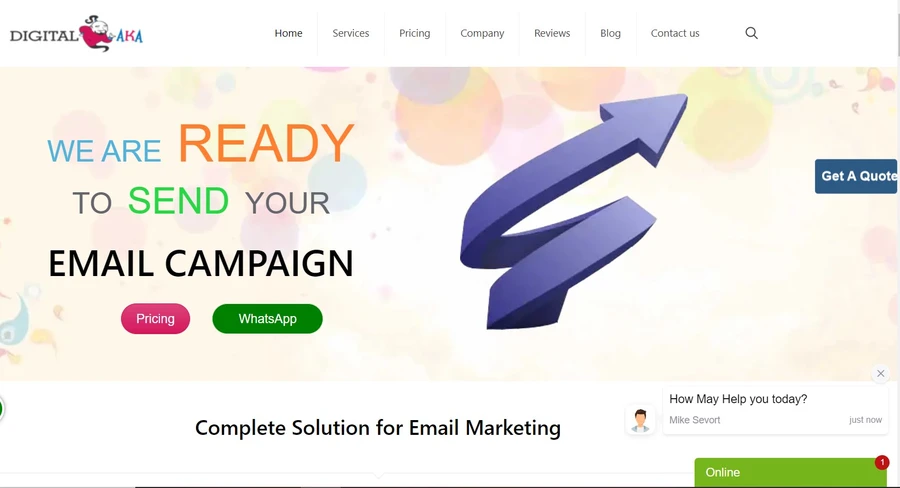
Digitalaka is a growing email marketing service that helps businesses create engaging and interactive email campaigns. It offers tools for personalization, real-time tracking, and interactive design elements, helping you boost performance with ease.
2. Stripo
Stripo is a popular email design tool that lets you add interactive elements like image carousels, rollover effects, and embedded videos. It has a drag-and-drop editor and many templates.
3. Mailchimp
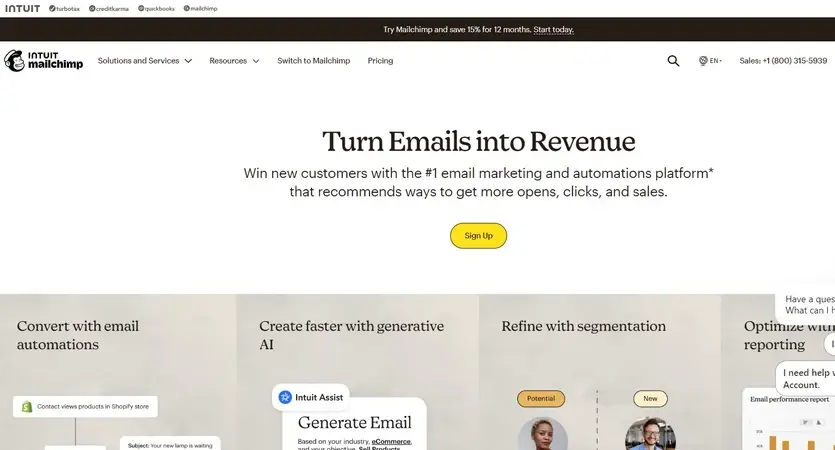
Mailchimp allows you to add interactive features like surveys, polls, and buttons. It’s easy to use and perfect for beginners who want to create smart and engaging campaigns.
4. Moosend
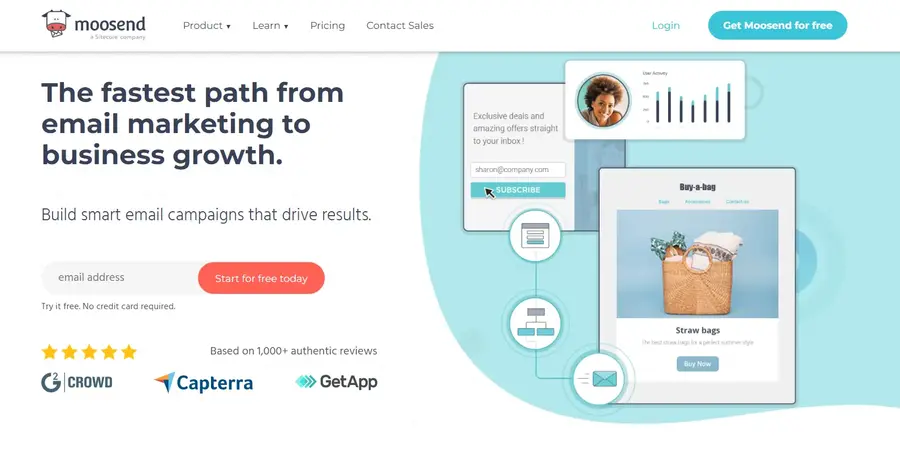
Moosend supports interactive email campaigns and offers personalization, automation, and an easy-to-use editor to make your emails more dynamic.
5. iDealSMTP
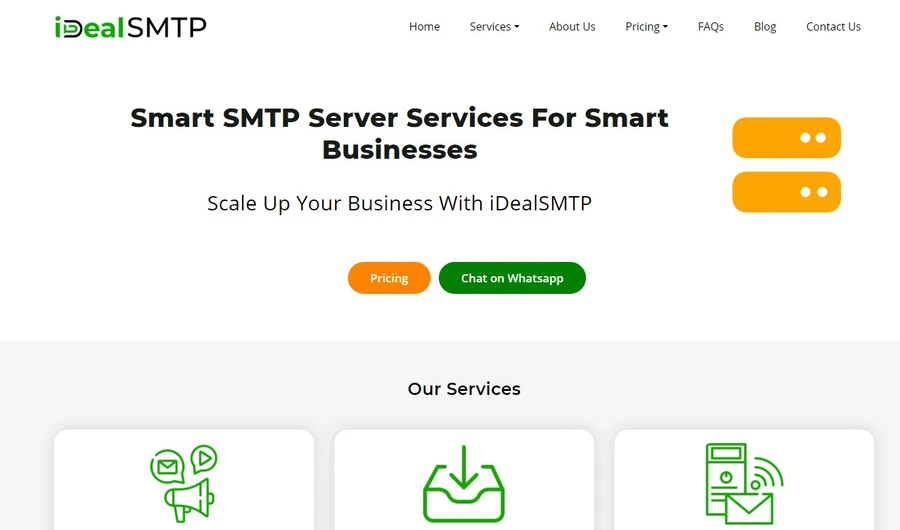
iDealSMTP offers a simple interface for designing Interactive Email Content templates. You can use pre-made blocks for videos, buttons, or images and export your design to any email platform.
6. Litmus
Litmus helps you test your Interactive Email Content across different email clients like Gmail, Outlook, and Apple Mail. It ensures that your content looks perfect everywhere.
7. HubSpot Email Tool
HubSpot’s email builder supports interactive content like CTAs (Call-to-Actions), forms, and videos. It also offers automation and analytics to track user engagement.
8. Zembula
Zembula is a powerful tool for adding interactive experiences like scratch cards, image reveals, and real-time countdown timers that boost curiosity and clicks.
9. AMP for Email (by Google)
AMP (Accelerated Mobile Pages) lets you build highly Interactive Email Content with live content like forms, product carousels, or even booking tools, right inside the inbox.
10. Email on Acid
This tool lets you preview and test interactive emails on multiple platforms. It also offers optimization tools to improve deliverability.
Conclusion:
In 2025, using interactive email content is a clever way to increase engagement, drive more clicks, and boost conversions. From using animations and clickable elements to adding polls and carousels, interactive content makes your emails more fun and effective. With the help of easy-to-use tools like Stripo, Mailchimp,iDealSMTP, Digitalaka, and others, creating Interactive Email Content is now simple for everyone. Be sure to keep your email design simple, mobile-friendly, and tested on different email platforms for best results. By following best practices and using the right tools, you can make your email marketing stand out and connect better with your audience. Start creating Interactive Email Content and see the results grow!
FAQ Related to Interactive Email Content
Here are some simple and clear FAQs related to Interactive Email Content:
What type of interactive content works best?
Polls, image sliders, countdown timers, product carousels, and animated buttons usually perform well depending on your goal and audience.
Is it hard to create interactive emails?
No, many tools now offer drag-and-drop features and pre-designed blocks that make it easy, even for beginners.
Can interactive emails help with sales?
Yes, interactive content can guide users to take actions like buying a product, signing up, or clicking a CTA, helping improve sales.
How do I track interactions in an email?
You can use email marketing platforms with built-in tracking or add custom tracking to buttons and links.
Are interactive emails mobile-friendly?
They can be, if designed properly. Always use responsive design to ensure your emails work well on all screen sizes.
Can I use videos in interactive emails?
Yes, you can use embedded or linked videos. GIFs are also a popular option for short animations.
What is interactive email content?
Interactive email content includes features like buttons, videos, polls, sliders, and image carousels that users can click or interact with inside the email.
Why should I use interactive content in my emails?
Interactive content grabs attention, keeps readers engaged, and increases click-through and conversion rates.
Do all email clients support interactive emails?
No, some email clients (like older versions of Outlook) may not fully support interactive features. That’s why it’s important to include fallback content.
What are the best tools for creating interactive emails?
Some popular tools include Stripo, Mailchimp, iDealSMTP, Digitalaka, HubSpot, and AMP for Email.






